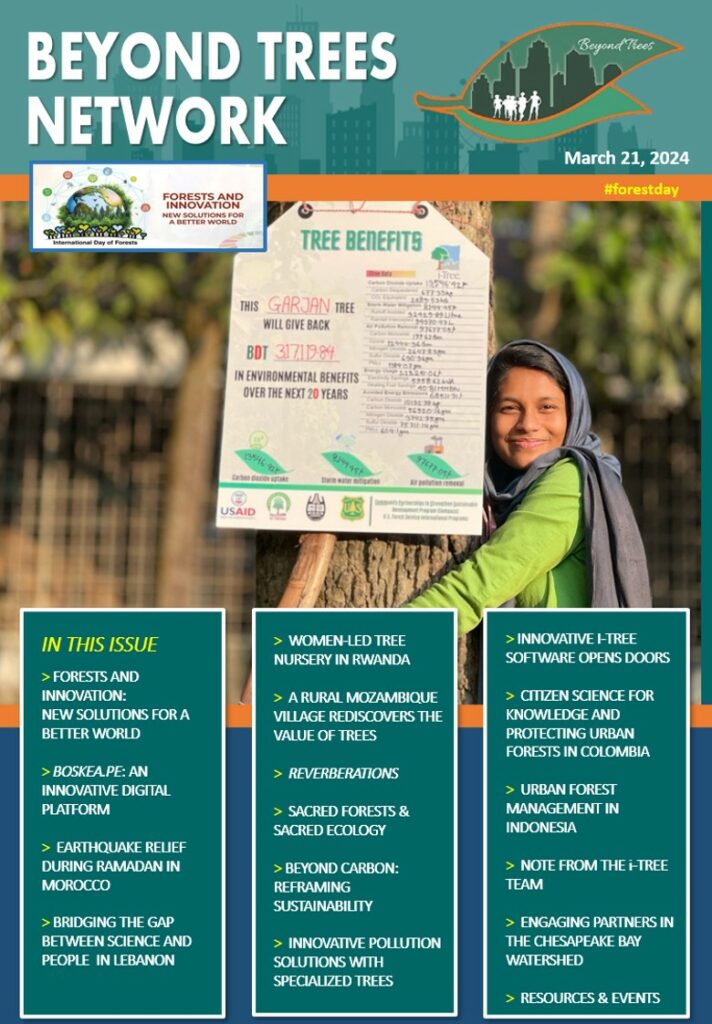Newsletter
The United Nations International Day of Forests is celebrating the theme of Forests and Innovation in 2024. The Beyond Trees Network is highlighting innovation throughout the year from across the globe.
Click on the Beyond Trees publication that celebrate forests and innovation – from practices to technology – across the world.
IN THIS ISSUE:
> Forests And Innovation: New Solutions For A Better World
> Boskea.Pe: An Innovative Digital Platform
> Earthquake Relief During Ramadan In Morocco
> Bridging The Gap Between Science And People In Lebanon
> Women-Led Tree Nursery In Rwanda
> A Rural Mozambique Village Rediscovers The Value Of Trees
> Reverberations
> Sacred Forests & Sacred Ecology
> Beyond Carbon: Reframing Sustainability
> Innovative Pollution Solutions With Specialized Trees
> Innovative I-Tree Software Opens Doors
> Citizen Science For Knowledge And Protecting Urban Forests In Colombia
> Urban Forest Management In Indonesia
> Note From The I-Tree Team
> Engaging Partners In The Chesapeake Bay Watershed
> Resources & Events
